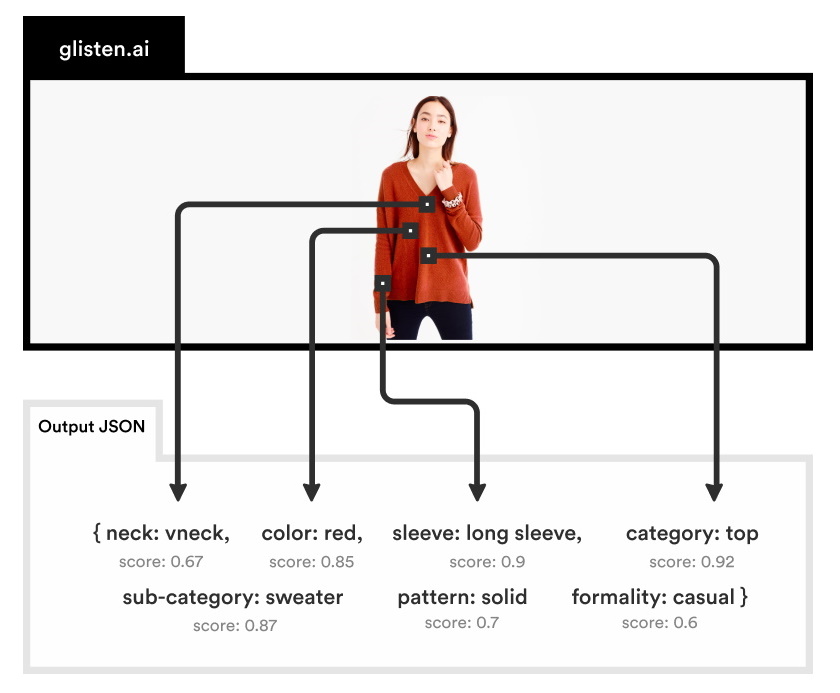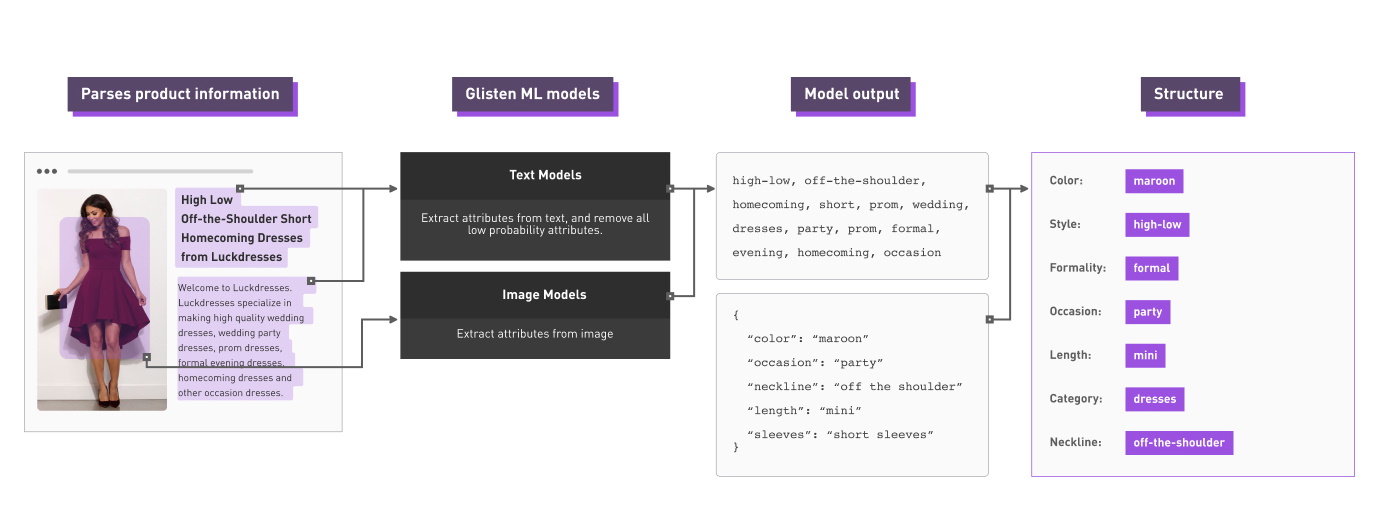Music
Trailers
DailyVideos
India
Pakistan
Afghanistan
Bangladesh
Srilanka
Nepal
Thailand
StockMarket
Business
Technology
Startup
Trending Videos
Coupons
Football
Search
Download App in Playstore
Download App
Best Collections
Technology

Bill Gates has stepped down from the board of Microsoft to spend more time on his philanthropic endeavors, the company announced Friday afternoon. Though he will remain technology advisor to CEO Satya Nadella, this move reduces his involvement with the company to the lowest level it has ever been.
Gates led Microsoft from the &80s all the way through 2008, when he left to dedicate himself more fully to the Bill - Melinda Gates Foundation, through which he has channeled a great deal of his immense wealth toward global health concerns.
He remained on the board, however, and in fact chaired it until 2014. But starting today he will only be there as, presumably, something like a lucky charm and occasional auxiliary brain to Nadella and his crew.
&Itbeen a tremendous honor and privilege to have worked with and learned from Bill over the years,& said Nadella in a Microsoft press release. &I am grateful for Billfriendship and look forward to continuing to work alongside him to realize our mission to empower every person and every organization on the planet to achieve more.&
While I shall not attempt a complete Gates/Microsoft retrospective at this time, itbeen an interesting journey to witness, to say the least. Microsoft has embodied the best and the worst of technology, sometimes simultaneously (it contains multitudes), and much of that was due to Gatesindelible influence.
The Gates Foundation has been extremely influential as well, though in a quieter and more humane fashion. It may be that Gatessecond legacy will ultimately outshine his first.
The updated lineup on Microsoftboard is as follows:
John W. Thompson, Microsoft independent chair; Reid Hoffman, partner at Greylock Partners; Hugh Johnston, vice chairman and chief financial officer of PepsiCo; Teri L. List-Stoll, executive vice president and chief financial officer of Gap, Inc.; Satya Nadella, chief executive officer of Microsoft; Sandra E. Peterson, operating partner, Clayton, Dubilier - Rice; Penny Pritzker, founder and chairman, PSP Partners; Charles W. Scharf, chief executive officer and president of Wells Fargo - Co.; Arne Sorenson, president and CEO, Marriott International Inc.; John W. Stanton, chairman of Trilogy Equity Partners; Emma Walmsley, CEO of GlaxoSmithKline plc (GSK); and Padmasree Warrior, founder, CEO and president, Fable Group Inc.
- Details
- Category: Technology Today
Read more: Bill Gates leaves Microsoft’s board
Write comment (93 Comments)
Just like you, we at TechCrunch have been keeping a close eye on the developing situation around the novel coronavirus outbreak. This is indeed a challenging time for families and businesses across the globe.
TechCrunch is not immune. Our events, big and small, have always been designed to bring the tech startup community together, to make connections and grow alongside one another.
Right now, our top goal is to ensure the health and safety of our team, our audience and the broader community. Based on guidance from California Governor Gavin Newsom and other officials, TechCrunch has decided to postpone TC Early Stage in San Francisco and TC Sessions: Mobility in San Jose.
- Early Stage SF will now take place on July 21 at the Hilton Union Square in San Francisco.
- Sessions: Mobility will now take place on October 6 at California Theater in San Jose.
If you&ve purchased a ticket for either of these events, or have sponsored one of these events, you will be contacted via email about your cancellation options. If you have any other questions or if you can&t find that email, don&t hesitate to reach out to us at This email address is being protected from spambots. You need JavaScript enabled to view it..
We&re working hard to ensure that we offer at these rescheduled events the same fantastic programming for which TechCrunch is known. We&ll keep you in the loop on that front.
If any of our other events are affected by the coronavirus or other developments, we&ll update you right away. You can always check for the latest updates here.
Itimpossible to predict how all this will shake out, or how long that will take. TechCrunch has already experimented with virtual events and experiences in a variety of ways, from virtual hackathons to remote interviews. So, no matter what happens, we&re committed to finding interesting and creative ways to bring together entrepreneurs, investors, students and builders to learn from and guide one another.
We&re all in this together.
We hope to see you this summer!
- Details
- Category: Technology Today
Read more: TechCrunch is postponing Early Stage SF and Sessions: Mobility
Write comment (95 Comments)Itamazing that in this day and age, the best way to search for new clothes is to click a few check boxes and then scroll through endless pictures. Why can&t you search for &green patterned scoop neck dress& and see one? Glisten is a new startup enabling just that by using computer vision to understand and list the most important aspects of the products in any photo.
Now, you may think this already exists. In a way, it does — but not a way thathelpful. Co-founder Sarah Wooders encountered this while working on a fashion search project of her own while going to MIT.
&I was procrastinating by shopping online, and I searched for v-neck crop shirt, and only like two things came up. But when I scrolled through there were 20 or so,& she said. &I realized things were tagged in very inconsistent ways — and if the data is that gross when consumers see it, itprobably even worse in the backend.&
As it turns out, computer vision systems have been trained to identify, really quite effectively, features of all kinds of images, from identifying dog breeds to recognizing facial expressions. When it comes to fashion and other relatively complex products, they do the same sort of thing: Look at the image and generate a list of features with corresponding confidence levels.
So for a given image, it would produce a sort of tag list, like this:

As you can imagine, thatactually pretty useful. But it also leaves a lot to be desired. The system doesn&t really understand what &maroon& and &sleeve& really mean, except that they&re present in this image. If you asked the system what color the shirt is, it would be stumped unless you manually sorted through the list and said, these two things are colors, these are styles, these are variations of styles, and so on.
Thatnot hard to do for one image, but a clothing retailer might have thousands of products, each with a dozen pictures, and new ones coming in weekly. Do you want to be the intern assigned to copying and pasting tags into sorted fields? No, and neither does anyone else. Thatthe problem Glisten solves, by making the computer vision engine considerably more context-aware and its outputs much more useful.
Herethe same image as it might be processed by Glistensystem:
 Better, right?
Better, right?
&Our API response will be actually, the neckline is this, the color is this, the pattern is this,& Wooders said.
That kind of structured data can be plugged far more easily into a database and queried with confidence. Users (not necessarily consumers, as Wooders explained later) can mix and match, knowing that when they say &long sleeves& the system has actually looked at the sleeves of the garment and determined that they are long.
The system was trained on a growing library of around 11 million product images and corresponding descriptions, which the system parses using natural language processing to figure out whatreferring to what. That gives important contextual clues that prevent the model from thinking &formal& is a color or &cute& is an occasion. But you&d be right in thinking that itnot quite as easy as just plugging in the data and letting the network figure it out.
Herea sort of idealized version of how it looks:

&Therea lot of ambiguity in fashion terms and thatdefinitely a problem,& Wooders admitted, but far from an insurmountable one. &When we provide the output for our customers we sort of give each attribute a score. So if itambiguous, whether ita crew neck or a scoop neck, if the algorithm is working correctly it&ll put a lot of weight on both. If itnot sure, it&ll give a lower confidence score. Our models are trained on the aggregate of how people labeled things, so you get an average of what peopleopinion is.&
The model was initially aimed at fashion and clothing in general, but with the right training data it can apply to plenty of other categories as well — the same algorithms could find the defining characteristics of cars, beauty products and so on. Herehow it might look for a shampoo bottle — instead of sleeves, cut and occasion you have volume, hair type and paraben content.

Although shoppers will likely see the benefits of Glistentech in time, the company has found that its customers are actually two steps removed from the point of sale.
&What we realized over time was that the right customer is the customer who feels the pain point of having messy unreliable product data,& Wooders explained. &Thatmainly tech companies that work with retailers. Our first customer was actually a pricing optimization company, another was a digital marketing company. Those are pretty outside what we thought the applications would be.&
It makes sense if you think about it. The more you know about the product, the more data you have to correlate with consumer behaviors, trends and such. Knowing summer dresses are coming back, but knowing blue and green floral designs with 3/4 sleeves are coming back is better.

Glisten co-founders Sarah Wooders (left) and Alice Deng
Competition is mainly internal tagging teams (the manual review we established none of us would like to do) and general-purpose computer vision algorithms, which don&t produce the kind of structured data Glisten does.
Even ahead of Y Combinator demo day next week the company is already seeing five figures of monthly recurring revenue, with their sales process limited to individual outreach to people they thought would find it useful. &Therebeen a crazy amount of sales these past few weeks,& Wooders said.
Soon Glisten may be powering many a product search engine online, though ideally you won&t even notice — with luck you&ll just find what you&re looking for that much easier.
(This article originally had Alice Deng quoted throughout when in fact it was Wooders the whole time — a mistake in my notes. It has also been updated to better reflect that the system is applicable to products beyond fashion.)
- Details
- Category: Technology Today
Read more: Glisten uses computer vision to break down product photos to their most important parts
Write comment (94 Comments)Ravi Viswanathan has been an investor long enough to see some serious ups and downs.
Viswanathan most recently founded NewView Capital a couple of years ago — a firm that launched with $1.35 billion from investors, largely to acquire the stakes of 31 companies that had been funded by New Enterprise Associates.
But before NewView, Viswanathan spent nearly 15 years with NEA, co-leading its growth investments. Ithow he knew which companies to take with him to NewView, which, by the way, largely shares the same investors as NEA.
Because he has seen the business world come to a stop a couple of times in his career — and because he has a lot of insight into the later-stage market — we talked with Viswanathan yesterday about the impact the massive public market meltdown could have on his piece of the startup world — and for how long. Our chat has been edited for length.
TechCrunch: You&re pretty much focused on late-stage companies, correct?
Ravi Viswanathan: We&re mid- to later-stage growth. It accounts for 70% to 80% [of the portfolio] and the balance is earlier-stage companies where I have a lot of conviction based on where I&ve invested previously, including in fintech and SaaS.

NewView Capital founder Ravi Viswanathan
What are some of the companies in your portfolio that are entirely new deals, meaning they were not part of the package of companies you took to spin out NewView from NEA?
Plaid was a new deal. Course Hero. Hims. Scopely. Heap, which is a product analytics company.
- Details
- Category: Technology Today
Read more: NewView Capital’s Ravi Viswanathan on how mature companies can survive this market
Write comment (100 Comments)Womenpioneeredthe field of computer technology. Yet, in 2020, the sector is still dominated by men. Though the industry has made efforts toward achieving diversity and inclusion, progress has been slow, with only 26% of women — and even fewer Hispanic (2%) and African American (3%) women — currently in the tech workforce.
While it may be relatively easy for women to enter the industry, they often stall in lower-level positions, leaving women feeling stagnated in their careers. Companies can, however, improve their gender-diversity efforts and accelerate the number of women not only entering, but advancing and succeeding in, the tech industry by implementing sponsorship programs.
Sponsors include those in leadership positions who go beyond merely offering guidance and advice to more junior colleagues and instead act as advocates by using their leadership skills, power and influence to proactively help build and advance the careers of their &sponsorees.& In fact, a study by the Center for Talent Innovation found that respondents working in STEM careers ranked sponsorship programs among the top five most effective initiatives in retaining and advancing women in STEM roles and careers.
For women who want a career in tech, a sponsor can help eliminate bureaucratic red tape and other hurdles by putting the focus on an employeeskills and accomplishments, recommending her for coveted assignments and identifying and helping female employees secure opportunities to expedite advancement within a company. When a female employee is sponsored by a senior- or executive-level employee, it can give her more of a voice within her company and specific department, improving the likelihood that she will contribute proactively to the team, help promote a positive company culture and improve the overall business.
The problem is that many tech companies aren&t taking the best approach to promoting gender diversity. According to a report by AnitaB.org, eight in 10 tech companies offer formal gender diversity training programs to reduce gender bias at work. While the aim of these programs is to help every employee understand the value of gender diversity and address the barriers to creating a diverse and inclusive team, research has shown that these programs don&t actually increase workforce diversity.
One study found that after five years of instituting required diversity training programs for managers, companies showed no change in the number of women in management positions, and actually experienced a decrease in the proportion of Asian American and African American women in managerial roles.
Although it is laudable that companies are making more conscious efforts to tackle gender biases, initiatives such as re-skilling and career development programs do more to help women advance in the workplace and drive forward their careers. To correct the gender imbalance, employers should place a bigger emphasis on providing career progression offerings, like sponsorships.
Developing and encouraging the use of sponsorship programs that offer women support and recognition can be vital to attracting and retaining top female talent. In 2017, Accenture, a professional services company, publicly committed to reaching a gender-balanced workforce by 2025. To drive this initiative, the firm developed a sponsorship program in which senior female employees are paired with C-suite executives who assist them in driving their careers forward, and the results have been promising. Forty-seven percent of Accenturenew hires are women, and women comprise 44% of its global workforce. The company maintains that 100% of its female employees participate in programs intended to mentor, sponsor and develop their careers.
IBM has also established programs to advance women in technical leadership roles. Through its Technical WomenPipeline Program, the company aligns mid-career women with both a sponsor and an executive coach to help them navigate opportunities that would not be accessible otherwise. Women currently hold a quarter of management positions worldwide and comprise 29%of the total workforce.
Deloitte has also seen the positive results from its implementation of a sponsorship program. In the 2019 fiscal year, women accounted for44%of the companyworkforce and almost aquarterof its Global Board is made up of women.
With a sponsor by their side, women are more likely to be promoted to leadership positions than their peers who don&t have a sponsor. Sandy Carter, VP of enterprise workloads at Amazon Web Services, has said that &sponsorship is one of the most important elements for success of all aspiring leaders.& In fact, Catalyst research found that when women are partnered with sponsors, they are just as likely as men to receive a promotion. And according to a recent report byPayScale, as professionals scale up the corporate ladder, the more likely they are to have had a sponsor. The report found that 59.2% of managers reported having a sponsor, and, at the executive level, 65.5% of individuals have a workplace sponsor.
And while these programs are essential in helping women advance in their companies and careers, sponsorships are also crucial to helping women move closer to bridging the gender pay gap, which is currently at 3%within the industry. A Ripple Match report found that women entering the job market make just 76% of what their male counterparts make. But with a sponsor, individuals tend to make 11.6%more than those who don&t have a sponsor.
Sponsorships can also make a real difference in helping the industry meet and exceed its diversity goals. If women feel supported and represented within a company, they are more likely to remain and contribute to the advancement of other professional women around them, creating a long-lasting positive impact. Business leaders who have participated in sponsoring relationships have reported feeling an increase in job satisfaction and a greater sense of commitment to their organization, resulting in a longer tenure.
If tech companies want to ignite real change within the industry, they must bolster their dedication to empowering female talent. Offering sponsorship programs shows women that employers are committed to aligning them with advocates who will ensure that sexism will not play a role in hindering their career growth in the tech industry they helped create.
- Details
- Category: Technology Today
Read more: Sponsors could be key to solving tech’s lack of gender diversity
Write comment (90 Comments)Y Combinator Demo Day is a key soirée on the startup calendar. This year, however, instead of a packed room replete with short pitches and lackluster catering, Demo Day has gone virtual. Even more, it was moved up by a week, pushing the public debut of a host of companies to this coming Monday.
TechCrunch will be covering it closely, so make sure to stick around the site for notes and interviews. But who wants to wait that long? I&ve gotten to know one of the pitching startups, FitnessAI, over the past few weeks. Lettake a look at its business.
FitnessAI
FitnessAI is a mobile application that helps users lift weights, helping them set new goals, gain strength over time and avoid frustration while dodging burnout.
The company was founded by Jake Mor in 2019, leveraging a workout data set that Mor had previously collected. Mor told TechCrunch that in college he built a tool called Lift Log (you can find it on the App Store here). That app was &just a very simple weightlifting tracking tool,& Mor said, but &over the course of three years over 40,000 users logged 6 million workouts.&
That huge set of workout data points helped Mor construct FitnessAIcore weight-lifting algorithm.
Peering through his mountain of data, Mor said that he was able to discern &the perfect rate of progression for each exercise.& Regular progression isn&t a nice to have, according to Mor, but a key way to keep people in the gym (and using his service), saying that hefound that breaking personal records &makes working out a little bit more addicting, and more motivating to keep going back to the gym.&
But data isn&t the full story to FitnessAI, despite it featuring &AI& in its name. During the life of his company, Mor found that a human touch was key to keeping users engaged. He told TechCrunch that lots of folks are self-conscious about going to the gym and working out in its environment, so while he was &so busy working on [the] algorithm& that powers the companyservice, &what users cared most about was tutorials.&
The helping hand of crafted guides and human outreach work together with the appcode to keep people engaged. According to Mor, his team &will reach out to every single user if you don&t go to the gym,& adding that &half of fitness AI is the human touch.&
So from a data set to an algorithm to a mobile app to a guided weight-lifting experience, FitnessAI has gotten a lot done in the last year or so. And it has done so while largely self-funding.
Money
To date, the company told TechCrunch that it has bootstrapped, apart from its standard Y Combinator check. That said, itlooking to raise during the Demo Day cycle.
How has it gotten to where it is today on such little capital? By growing its revenues and paying for its own development. Indeed, the mobile app company is now north of $100,000 monthly recurring revenue (MRR), giving it annual recurring revenue (ARR) of more than $1.2 million. For a team of four today that was 1.5 not too long ago, thatlots of cash.
But with more money comes more opportunities for product improvements, and go-to-market work. What FitnessAI has shown so far is that people need help lifting, and they are willing to pay for assistance. (FitnessAI has a number of price points, but costs a little less than $100 yearly, looking at its App Store listing today.)
More after Demo Day if FitnessAI raises the round ithunting for.
- Details
- Category: Technology Today
Read more: FitnessAI races past $1M ARR heading into YC Demo Day
Write comment (96 Comments)Page 1217 of 1416

 8
8





